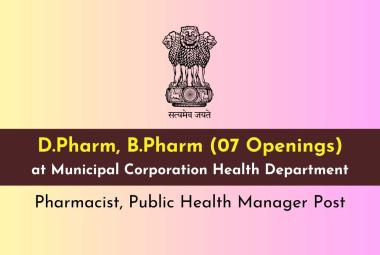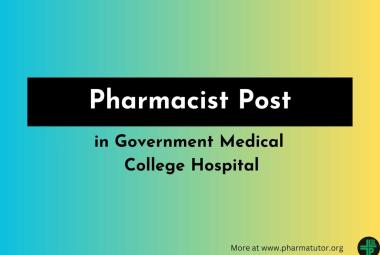About Authors:
Anil kumar vadda1, Lohithasu Duppala2
1AVANTHI Institute of pharmaceutical sciences, pharmacology,
2GITAM Institute of Pharmacy, GITAM University, Pharmaceutics,
visakhapatnam, Andhra Pradesh, India-530045
2lohithasu@gmail.com, 1anilkumar.vadda@gmail.com
ABSTRACT:
Rectal drug delivery is an efficient alternate to oral and parenteral route of administration in partial avoidance of first pass metabolism and protein peptide drug delivery. This route allows both local and systemic therapy of drugs. Controlled absorption enhancement of drugs can be achieved by the rectal route because of the constant conditions in the rectal environment. In the present review presents various dosage forms used in rectal route, factors related recatal route of absorption ,fate of drug absorption. This review also presents polymers in rectal route of drug delivery.
REFERENCE ID: PHARMATUTOR-ART-1637
INTRODUCTION:
Rectal drug delivery systems used to deliver the drug by using mucoadhesive polymers is through the mucous membrane of the rectum. Rectal drug delivery is so essential when the oral medication is not possible, Intra venous(I.V) access is not possible and the patients have difficulty in swallowing, nausea and vomiting and for infants or children. The rectal route though rarely the first choice of drug administration serves as an alternative to oral and invasive administration. Hydrogels administered rectally have proven to be useful for drug delivery ,that hydrogels using hydroxy ethyl methacrylate cross-linked with ethylene glycol dimethacrylate and including antipyrine and theophyiline as model drugs provided rate-controlled drug delivery.1,2
PHISIOLOGY OF HUMAN RECTUM:
The human rectum is the terminal part of GastroIntestinal Tract. It is 10 – 15 cm long slightly dilated part of the large intestine. In the latent position the rectum does not have any active motility. Normally the rectum is empty & contains 2-3 ml of inert mucus fluid. (pH 7-8), which is secreted by the goblet cells forming simple tubular glands in mucosal layer. This mucus has no enzymatic activity. There are no villi or microvilli on the rectal mucosa and thus a very limited surface area (200 – 400 cm2 ) is available for absorption. And this surface area is sufficient to absorb drugs.3,4
FATE OF DRUG ABSORBION IN RECTUM :
Fate of drug absorbed from rectum depends upon the position of it in the rectum, both blood and lymphatic vessels are rich in the sub mucosal region of rectal wall. Upper hemorrhoidal vein drains into the portal circulation, so the drug absorbed in the upper region will pass through the liver before entering the systemic circulation. While the lower & middle hamorrhoidal veins drain directly into the inferior venacava. So the drugs absorbed in the lower region of the rectum will directly enter into the systemic circulation.5,6
ADVANTAGES:
Rectal route offers prospective advantages for drug delivery.
· Rapid absorption of so many low molecular weight drugs,
· The drug causing severe nausea & vomiting, the oral administration may cause emesis,in that case rectal drug delivery system is helpful,
· Irritation to stomach & small intestine associated with certain drug can be avoided, in that case rectal drug delivery system is helpful,
· Partial evasion of first pass metabolism,
· Prevention of drug from acidic & enzymatic degradation achieved,
· Drug absorption can be easily interrupted in cases of accidental overdose or suicide attempts, , in that case rectal drug delivery system is helpful,
· Potential for absorption into the lymphatic system,
· Retention of large volumes,
· Rate controlled drug delivery,
· Absorption enhancement,
· Target & localized drug delivery,
· Avoidance of drug degradation,
· Prolonged effect.
DISADVANTAGES:
· Inconvenient for patients.
· The absorption of drugs is frequently irregular & difficult to predict.
VARIOUS RECTAL DRUG DELIVERY SYSTEMS7:
Rectal semisolids:
1) Creams
2) Gels
3) Ointments
4) Suppositories
5)Rectal liquids :
1) Solutions
2) Suspensions and Rectal aerosols
CREAMS, GELS, OINTMENTS :
These preparations are used for topical application to the perianal area for insertion within the anal canal. They largely are used to treat local conditions of anorectal pruritis, inflammation and the pain and discomfort associated with hemorrhoids. The drugs includes astringents (eg. Zinc oxide), protectants and lubricants ( eg. Cocoa butter, lanolin), local anaesthetics (eg. Pramoxine HCL), and antipruritis and anti inflammatory agents( eg. Hydrocortisone).
The bases used in anorectal creams and ointments includes combinations of polyethylene glycol 300 & 3350 , emulsion cream bases using cetyl alcohol & cetyl esters wax , and white petroleum and mineral oil. The preservatives like methylparaben, propylparaben, benzlyacohol and butylated hydrocortisole (BHA) are also used.
Several commercial rectal creams and ointments and gels - ANUSOL ointment - GLAXOSMITHKLINE ( starch) TRONOLANE cream - ROSS ( pramoxine HCL) ANALPRAM -HC cream DIASTAT Gel - AcuDial ( Diazepam )
Application:
Before applying rectal ointments and cream the perianal skin and the affected area should be cleaned and dried. Special types of applicators are used for applications of creams & several market preparations are available with perforated applicator tips and inserters.
Packaging:
Rectal ointments creams and gels are packed with special perforated plastic tips for products to be administered in to the anus.
RECTAL SUPPOSITORIES:
Solid suppositories are the most common dosage form used for rectal drug administration. Usually these are torpedo-shaped dosage forms composed of fatty bases (low-melting) or water-soluble bases (dissolving) which vary in weight from 1 g (children) to2- 2.5 g (adult). Lipophilic drugs are usually incorporated into water-soluble bases while hydrophilic drugs are formulated into the fatty base suppositories.
Rectalsuppositories made from fatty bases, melting point should occur rapidly near body temperature (37°C). Ideally the resultant melt would readily flow to offer thin, broad coverage of the rectal tissue, in that way minimizing lag time effects due to slow release of the drug from the rectal suppository base. Water-soluble rectal suppositories should likewise readily dissolve at 37°C to facilitate drug release and subsequent absorption.
Packaging:
Packaging is done after lubrication with proper lubricant in aluminum foil or in other suitable material. And with indication [ STORE IN A COOL PLACE ] The use of gels, foams or ointments for rectal administration can afford advantages over liquid formulations because retention of the dosage form in the rectal cavity reduces patient compliance problems. Drug release with semisolid dosage forms is usually limited to local indications such as hemorrhoids and lower bowel inflammation (proctitis). Drug release and subsequent pharmacologic action is usually faster with semisolid formulations than with solid suppositories since a lag time is not required for melting or dissolution.
RECTAL LIQUIDS:
Rectal suspensions, emulsions & solutions Solutions, suspensions, or retention enemas represent rectal dosage forms with very limited application, largely due to inconvenience of use and poor patient compliance. In many cases, these formulations are utilized to administer contrast media and imaging agents for lower GI roentgenography. Although drug absorption from solutions has been shown to exceed that from solid suppositories in some cases so this particular administration route is only infrequently employed. This dosage forms are mainly used as enemas Retention enema : For systemic or local effect this is used. The drugs like hydrocortisone (local effect) or aminophylline (systemic effect) etc are used in this dosage form. Evacuation enema: For cleansing of bowel this enemas are used. The agents are sodium phosphate and sodium biphosphate, glycerin and doccusate potassium and light mineral oil.
Applicators or inserts for rectal liquids:
There are several types of applicators available as follow- Bubble insert, squeeze insert,Rectal liquid inserts ,Rectal solution of ASACOL.
RECTAL AEROSOLS:
Rectal aerosol foam products are also accompanied by applicators to facilitate administration. The applicaton is attached to the container and filled with a measured dose of product. Metered dose aerosols are available. The inserter is inserted in to the anus and the plunger is pushed to deliver the drug product.
Several marketed rectal aerosols are like PROCTOFOAM HC ( Schwarz ), CORTIFOAM ( Alaven )etc.
FACTORS AFFECTING THE ABSORPTION OF DRUG FROM RECTUM:
PHYSICOCHEMICAL FACTORS
Physicochemical factors include such properties as;
· Relative solubility,
· pH partition
· Particle size, charge,
· Spreading of the administered formulation.
Colonic content- Drug will have greater opportunity to get absorbed when the rectum is empty. For this purpose enema is given before rectal drug administration.A drug will obviously have greater opportunity to make contact with the absorbing surface of the rectum and colon in an empty rectum.
Circulation route- If the drug is absorbed from lower hamorrhoidal veins it will directly take the drug to inferior venacava, so the absorption will be rapid and effective.Drugs absorbed rectally bypass the portal circulation during their first pass into the general circulation thereby enabling drugs to exert systemic effects.
Relative Solubility-
· Lipid water partition coefficient of a drug is an important consideration in the selection of a vehicle and in anticipating drug release from that vehicle.
· Drug solubility also affects the choice of suppository base or other vehicle.
pH partition-
· Rectal fluids are essentially neutral in pH 7-8 and have no effective buffer capacity.
· Drugs are best absorbed through the rectal mucosa in their un-ionized or neutral form Drugs with high partition coefficients (more lipophilic) tend to be better absorbed.
Particle size-
· The smaller the drug molecule, the more readily it can be absorbed.
· For larger molecules, some type of facilitated transport or the use of penetration enhancers have been found to increase drug absorption from the rectum as well as from other delivery routes.
Charge-
· Charged molecules have been found to pass through the rectal mucosa less effectively than neutral molecules.
Spreading of the formulation-
· For optimal drug absorption, it is important that the suppository or vehicle melts or dissolves rapidly and spreads over the rectum walls.
CLASSES OF POLYMERS WITH BIOADHESIVE PROPERTIES:
Hydrophilic polymers
These are water-soluble polymers that swell when they come in contact with water and eventually undergo complete dissolution. Systems coated with these polymers show high bioadhesiveness to the mucosa in dry state but the bioadhesive nature deteriorates as they start dissolving. As a result, their bioadhesiveness is short-lived.
An example is poly acrylic acid.
Hydro gels:
These are three-dimensional polymer networks of hydrophilic polymers which are cross-linked either by chemical or physical bonds. Examples are polycarbophil, carbopol etc.,
Co-polymers/ Inter polymer complex:
A block copolymer is formed when the reaction is carried out in a stepwise manner, leading to a structure with long sequences or blocks of one monomer alternating with long sequences of the other.
Thiolated polymers (Thiomers):
These are hydrophilic macromolecules exhibiting free thiol groups on the polymeric backbone. Based on thiol/disulfide exchange reactions and/or a simple oxidation process disulfide bonds are formed between such polymers and cysteine-rich subdomains of mucus glycoproteins building up the mucus gel layer. So far, the cationic thiomers, chitosan–cysteine, chitosan–thiobutylamidine as well as chitosan–thioglycolic acid, and the anionic thiomers, poly (acylic acid)–cysteine, poly (acrylic acid)–cysteamine, carboxymethylcellulose– cysteine and alginate– cysteine, have been generated. Due to the immobilisation of thiol groups on mucoadhesive basis polymers, their mucoadhesive properties are 2- up to 140- fold improved.
ACKNOWLEDGEMENTS:
Authors are thankful to GITAM Institute of Pharmacy and AVANTHI College of pharmacy for providing the facilities to bring out this review.
REFFRENCES:
1. Van Hoogdalem EJ et al. Pharmacokinetics of rectal drug administration, part I: general considerations and clinical applications of centrally acting drugs. Clin. Pharmacokinet.21(1); 1991:11-26.
2. Van Hoogdalem EJ et al. Pharmacokmetics of rectal drug administration, part II: clinical applications of peripherally acting drugs and conclusions. Clin. Pharmacokinet. 21(2); 1991: 110 -128.
3. Andrew Barleben. Anorectal Anatomy and Physiology. Surg Clin N Am 90. 2010: 1–15.
4. De Boer AG and Breimer DD. Hepatic first-pass effect and controlled drug delivery following rectal administration. Advanced Drug Delivery Reviews. 28; 1997: 229-237.
5. De Boer AG et al. Rate controlled rectal peptide absorption enhancement. In Penetration enhancement for polypeptides through epithelia. Advanced Drug Delivery Reviews. 8(2/3); 1992: 237-253.
6. Moolenaar F et al, Drastic improvement in the rectal absorption profile of morhine in man. Eur J of clin pharmacol. 29(1); 1985:119-121.
7. Rectal infusion of the model drug antipyrine with an osmotic delivery system L. G. J. De Leede 1 , A. G. De Boer 1 , D. D. Breimer 2 Article first published online: 13 JAN 2006 DOI: 10.1002/bdd.2510020205
NOW YOU CAN ALSO PUBLISH YOUR ARTICLE ONLINE.
SUBMIT YOUR ARTICLE/PROJECT AT articles@pharmatutor.org
FIND OUT MORE ARTICLES AT OUR DATABASE









